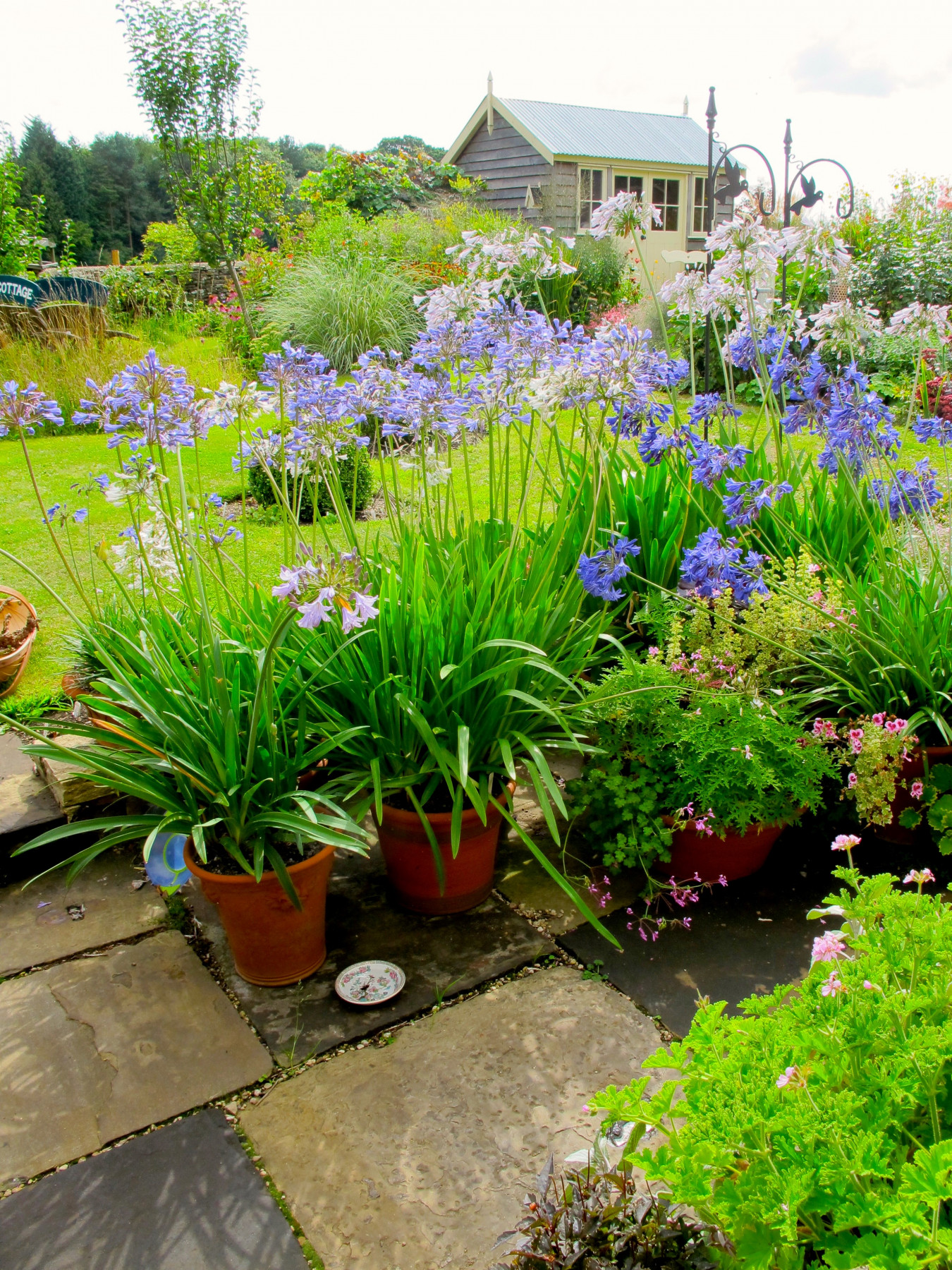
I regret to say that I only have a modest, unheated Hartley greenhouse, although I fantasise about bigger and better on an almost daily basis. However, my greenhouse serves me well in every season, despite its size, because it captures precocious warmth and sunlight. The air inside is often degrees warmer in winter and early spring, so plants (and thoroughly chilled gardeners) respond to the ambient conditions within. I often hide way on a chill, or damp day, and that allows me to fast forward time and enter the next season.
In winter I share the space with fourteen large pots of agapanthus, because these South African beauties don’t need heat in order to overwinter. South Africa is a rugged country, as you may discover if a chilly wind blows up from the South Pole. I had to invest in thick jumper when I visited in late spring, so agapanthus is more rugged than you might imagine. All you need to do in this country is to wean your agapanthus off water and food in early October, to allow the pots dry out before winter sets in. If you don’t have a greenhouse, simply lay your potfuls on their sides, in a dry spot. You can also do this with pots of lilies.
Agapanthus seedheads are generally removed as they form, but the foliage should be left to die down naturally as winter approaches.
Shear off all the faded leaves in January, when the plant is lying dormant, because they shoot early. It’s a fiddly, time-consuming affair once the new tips get mixed up with the old leaves.
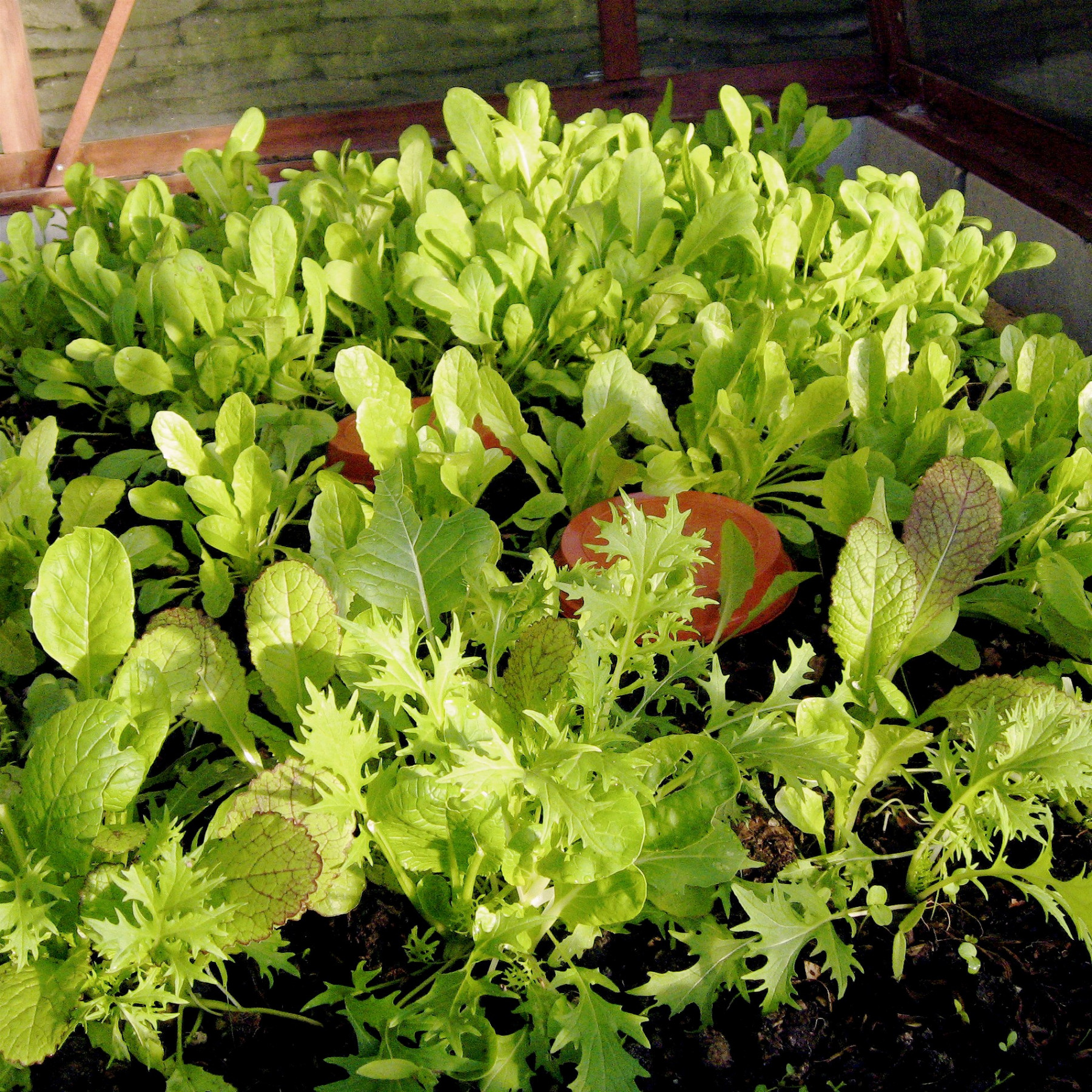
There are hundreds of named agapanthus, but there are only six species of agapanthus and they are all found in South Africa. Most of our named agapanthus cultivars are narrow-leaved, with a deciduous tendency so they die down in winter. They have been raised from species found on the eastern side of The Cape, an area that receives considerable summer rainfall because it catches an early share of India’s monsoon rain. Rainfall amounts close to Durban can vary between 40 inches to 60 inches a year. January, which is a summer month in South Africa, is normally the wettest month. That’s quite a deluge, when you bear in mind that London only gets an average of 27 inches per annum.
If you are lucky enough to get to South Africa, you can’t fail to notice that crocosmias, agapanthus and kniphofias are often found close to streams, ditches and water sources. They all do better in wetter British summers. The oft-repeated myth that agapanthus have to be starved and dry to flower well is completely wrong. On the contrary, agapanthus thrive on regular watering and regular doses of high-potash tomato food. Most of mine are potted up, because this raises them up and makes them more spectacular. They are moveable feasts, so they can be placed in front of areas that have seen better days – although they do need sunshine for most of the day. I also have some deciduous agapanthus in the ground and they overwinter well, although they are late to emerge – often reappearing in May here.
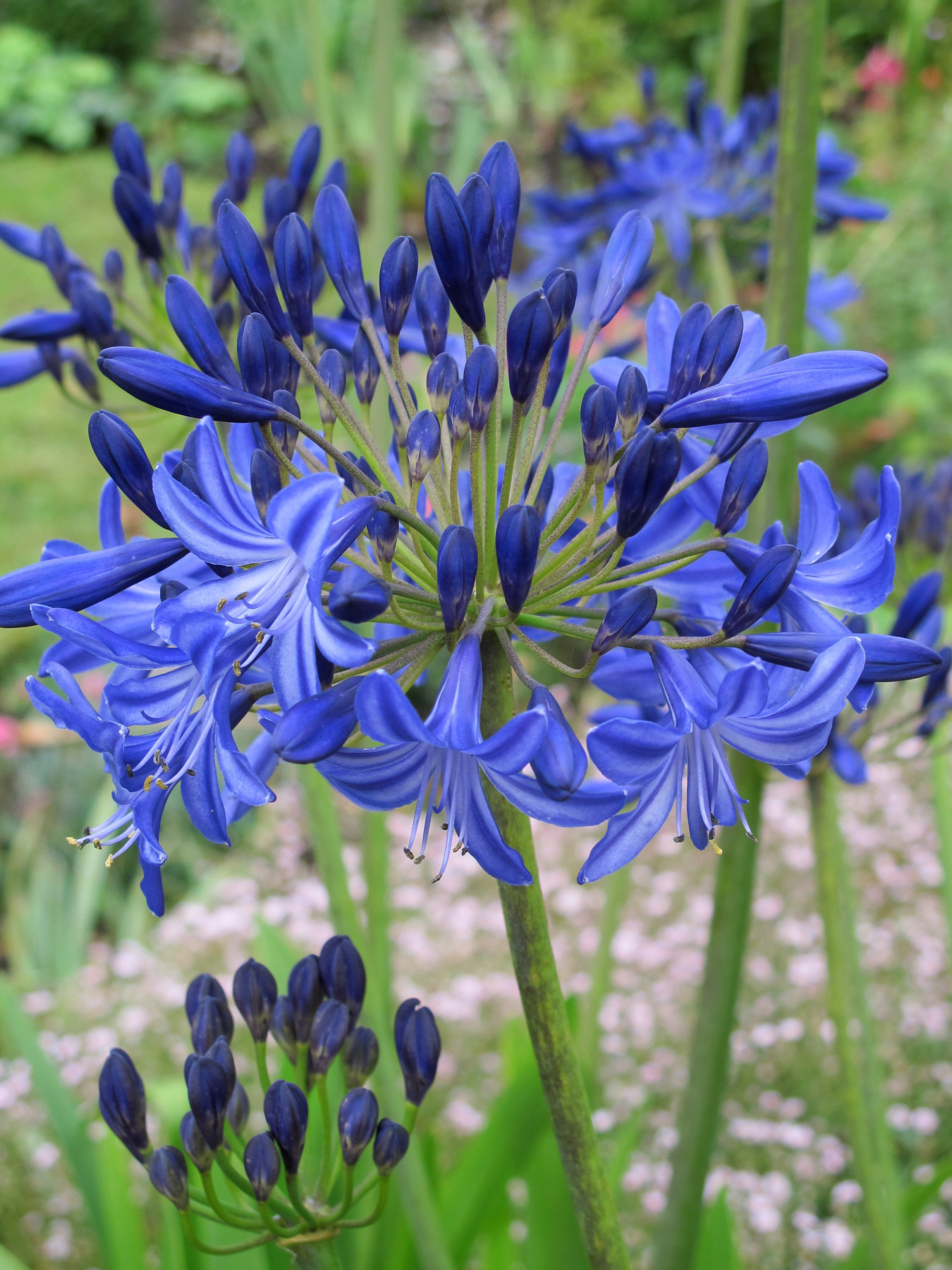
There are far fewer named evergreen agapanthus cultivars, because they are far less hardy and less tidy to look at. Due to their large, wide leaves. They have been raised from species that have evolved in a Mediterranean style climate, where winters are warm and wet and summers hot and dry. These areas tend to be on the western side of The Cape. I only grow one evergreen, ‘Hole Park Blue’, named after a garden in Kent. It can look ragged in winter, even after being tidied, because the foliage is much larger and wider. This sterile agapanthus bears two or three enormous flowers, but they last up until Christmas – long after it has been moved under glass. If an agapanthus (or any other plant for that matter) has enormous flowers there are never many of them. I prefer quantity, not super sizes.
‘Hole Park Blue’ was a generous present from Steven Hickman, a Yorkshire nurseryman from Hoyland Plant Centre. He grows and sells a wide range of South African plants including nerines, tulbaghia, clivia and amarine. Steven and son Colin have produced a useful book Success with Agapanthus. www.somethingforthegarden.co.uk They exbibit at all the major shows and also do mail order.
Most named agapanthus, well grown in a large pot, will produce twenty to thirty flowers. My floriferous favourites include the mid-to-dark-blue ‘Northern Star’ and ‘Midnight Star’. Both have neat foliage that’s darkly shaded at the base. The darkest- flowered one I grow is ‘Alan Street’ and this is the only dark agapanthus to produce lots of blue-black flowers. I also grow the pretty mauve ‘Tarka’, which is late to flower, and the silvery ‘Windsor Grey’. I am not too enamoured of the bi-coloured white and blue ones, or those with variegated foliage.
One of my best performers came from Peter Nyssen – www.peternyssen.com as un-named, cheaply bought bare-root plants. Steven Hickman believes that this is ‘Donau’, a cut flower variety used in the fields of Holland. This campanula-blue agapanthus is sometimes named ‘Blue Danube’ or ‘Danube’. I also grow a handsome ‘agapanthus-lookalike’, with daintier, soft-mauve flowers. Tulbaghia ‘John May’s Special’. This begins flowering in May and carries on until late autumn. Snap it up if you see it!
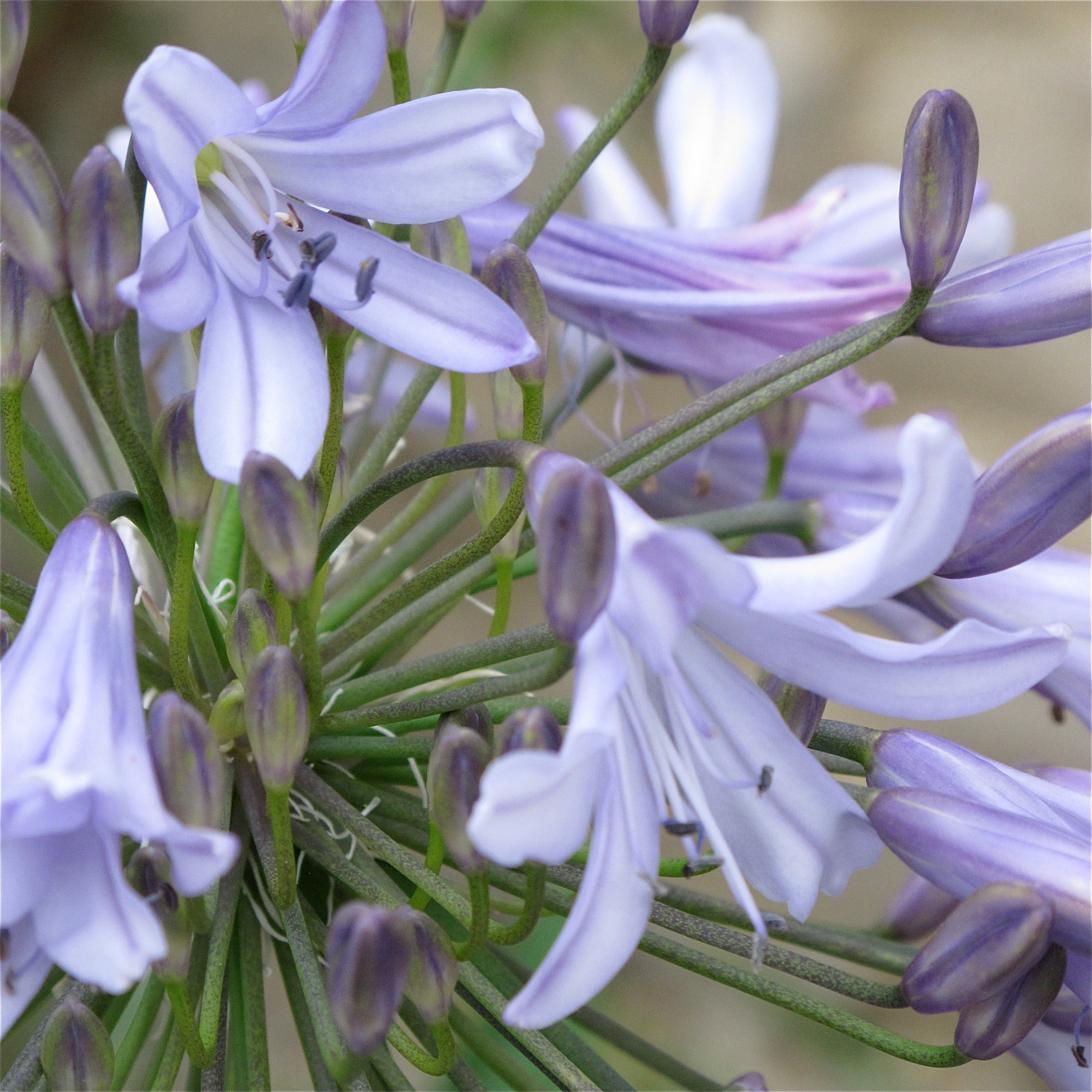
Most agapanthus have tough, rhizomatous roots and professional growers often use a chain saw to chop them up into largish chunks. Division is best done as the plants begin to start back into life and you will probably need to do this every three to four years. The trick is place three chunks back into a sizeable pot. If they have too much space for root development, they will only make foliage. Once mid-April arrives my pots are moved into a sheltered part of the garden and fleeced on cold nights.
I also use the greenhouse to grow a lot of easy annuals, because they are the most insect-friendly plants. Some hate disturbance, so they get sprinkled straight on to the soil, and these include annual poppies such as ‘Amazing Grey’ and ‘Sissinghurst White’, larkspur (now named Delphinium consolida), hare’s ear (Bupleurum griffithi), pot marigold (Calendula officinalis), love-in-a-mist (Nigella damascena) and some French marigolds (Tagetes patula). These seeds can be easily saved from year to year and most years sprinkling them in the second half of April works well.
Lots of annual seeds get sown into modular tray, containing – cells, on the greenhouse bench. This method produces plugs, which can be bedded straight out into gaps in early May, or they can be potted on and then planted. This method saves lots of back-breaking pricking out. Clary sage, annual scabious, cosmos, taller African marigolds such as ‘Burning Embers’, sunflowers and annual grasses get this treatment. They’re good gap fillers easily raised on a greenhouse bench.
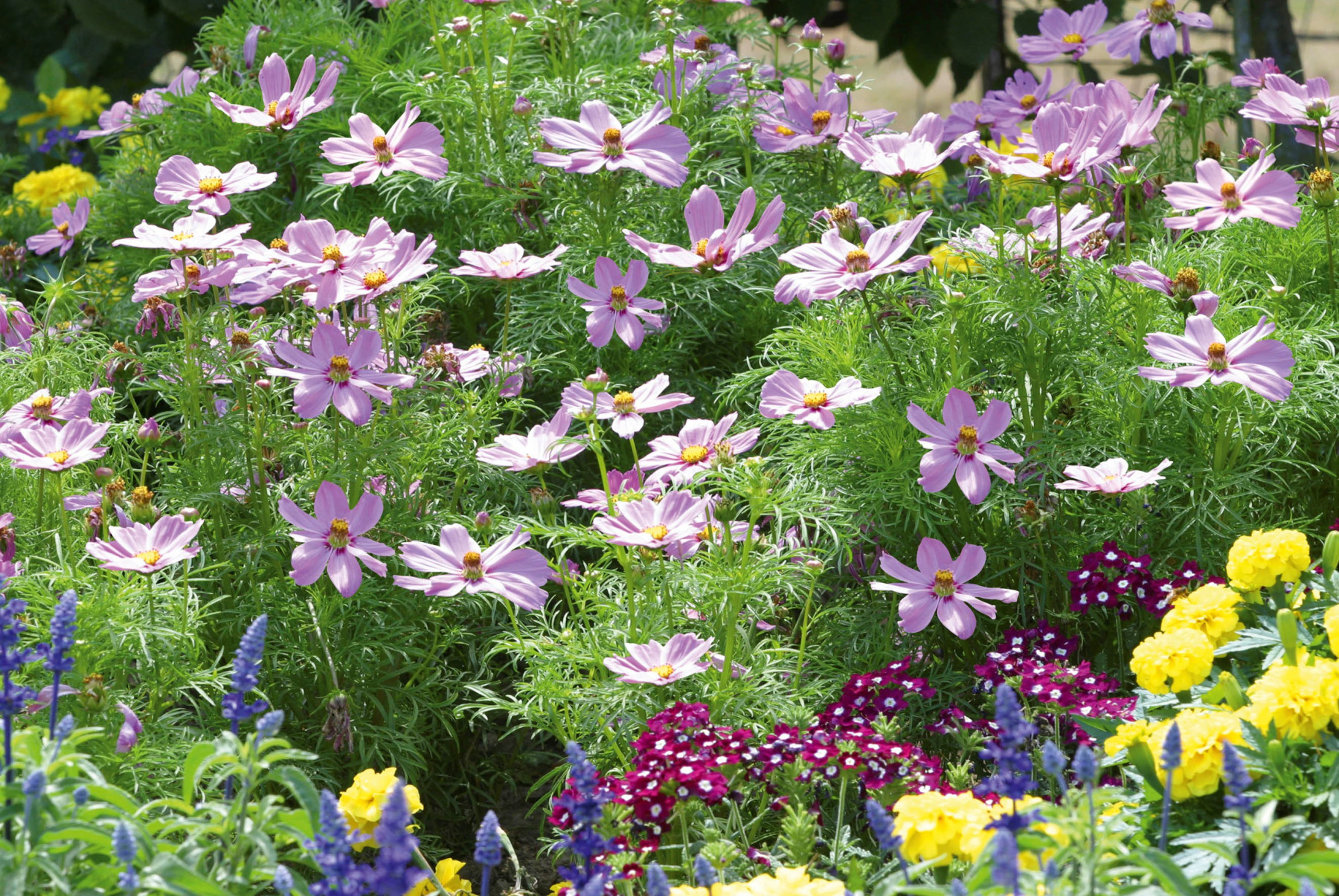
I also use upright annuals among the dahlias on the allotment, which means that I don’t have to stake my dahlias with canes. Cosmos work very well as supports and both of these South American plants come into their own as day length shortens. Both pick for the vase too. Last year I did well with Monarda ‘Lambada’. Whorls of purple flowers formed a stunning seedhead that lasted into winter, like a series of skewered Astrantia pincushions.
Pricking out is best tackled on a dull day, when the outside is less alluring. Spring is also the time to raise tomato, pepper and aubergine plants, with the aid of an electric plant propagator. There is always a moment in late April when the greenhouse smells of sweetly of growth and I drink it in.
In summer, it’s time to take cuttings and (as I have written before) I favour small seed trays full of coarse sand for this. Tender plants need an electric propagator if you intend to overwinter them. And these are relatively cheap to run. Pelargoniums, plectranthus, salvias, heliotrope, all succulents soon root and, if the cuttings are taken in May, June or the first half of July, they can be potted in in late August or September. If they are taken in august, it’s often best to leave them in the sand tray and pot them up from February onwards.
Many a greenhouse is left empty in winter, but mine still works hard because I grow winter salads in the bed that contained my tomatoes. You can find mixtures of winter leaves in seed catalogues, some spicy, and there are also winter lettuces, endives, radiccvhio and rocket seeds too. These can be sown in trays in September and then bedded out. They will provide you with home-grown winter salads from at least three months – saving you a fortune at the supermarket for bagged salads, weight by weight, are one of the most expensive items on the shopping list!



